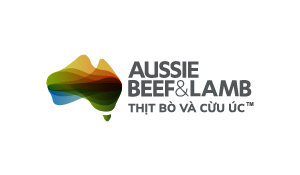Biodiversity and Red Meat
The presence of cattle and sheep on farms can have a detrimental effect on the biodiversity of a region. However, fresh approaches in grazing are enabling farmers to maintain both their livelihoods and the natural ecosystems around them.
Biodiversity and red meat
While cattle and sheep farming can have an impact on the biodiversity of an area, fresh approaches to grazing are helping farming and native biodiversity coexist.
Biodiversity is the variety of all life forms found in one area; the different plants, animals and microorganisms that live there, as well as the ecosystems in which they exist. Biodiversity is important for a productive and healthy environment, as it helps provide habitat for native species, supplies clean air and water, maintains soil health, and pollinates plants.
A healthy ecosystem helps farms be more productive, and farmers around the country (like the Hallidays in Walcha, NSW) are actively working to support biodiversity conservation by introducing new pastures and different species to the mix.
Can new grazing practices improve biodiversity?
It was once thought that grazing animals could only damage biodiversity. However, research has demonstrated that different grazing approaches can actually help biodiversity.
To understand this concept better, the industry is looking into sustainable land management practices and biodiversity on farms to identify how certain grazing approaches can help or hinder biodiversity. Once this research is complete, red meat producers will be given the tools and support to better protect the diverse ecosystems on their farms, while ensuring their businesses remain economically viable.
The Australian Government is also focused on improving on-farm biodiversity through its Australian Farm Biodiversity Certification Scheme and Smart Farms Program.
What else is the red meat industry doing to increase biodiversity?
Best practice guidelines for red meat producers are available to help them protect the native biodiversity on their land. These include:
- Keeping the number of grazing animals within the sustainable capacity of the property
- Using perennial pastures (as opposed to annual pastures) as they maintain a greater level of ground cover year-round, reducing the potential for soil erosion weed establishment
- Keeping soils healthy and in good condition
- Maintaining ground cover above 60%-70%
- Setting aside at least 10-15% of the property as core areas for biodiversity conservation
- Keeping weeds and feral animals in check.
Did you know?
- Due to efforts to reduce land clearing and deforestation on land that produces red meat, total woody vegetation in Australia has remained stable over the past 30 years (source).
- On many south-east Australian farms, native pastures make up 65% or more of the grazing area, helping to maintain native biodiversity and healthy landscapes (source).
Most of the native plant and animal species that occur in grazed pastures tolerate or prefer some livestock grazing. Birds such as Magpies and Willy Wagtails prefer to forage in open short pastures (source) .

